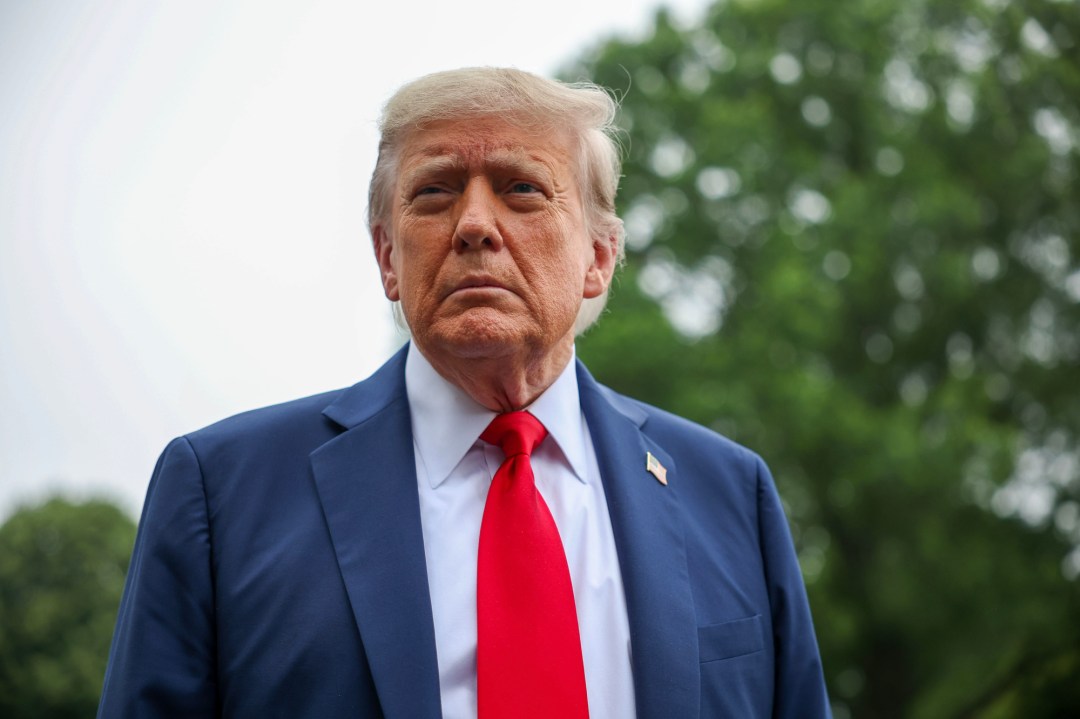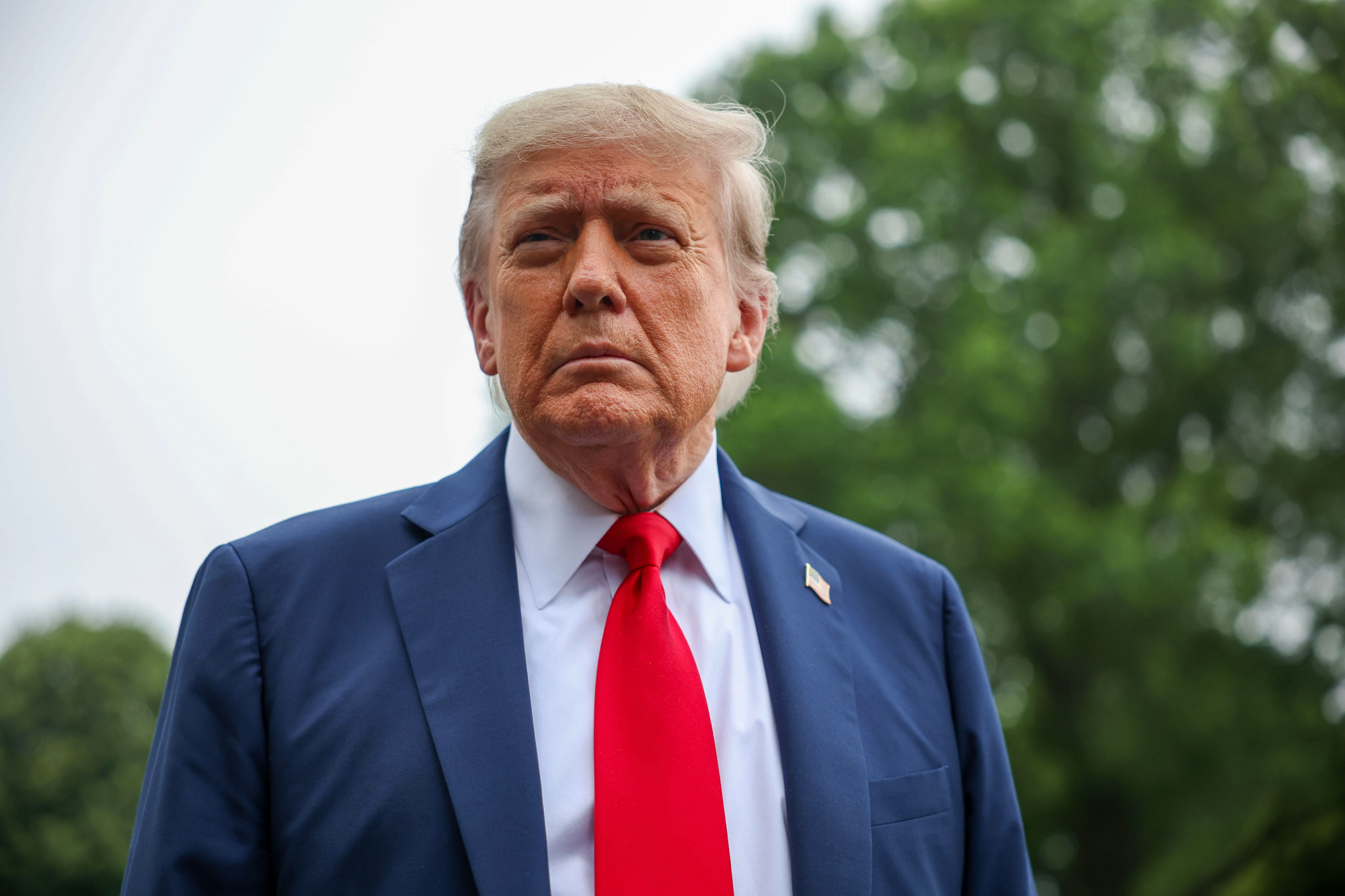In a statement relayed by press secretary Karoline Leavitt, the White House declared that President Donald Trump would decide ‘within the next two weeks’ whether to join Israel’s air campaign against Iran’s nuclear facilities. In isolation, it might seem a routine delay – an effort to keep diplomatic channels open, to stage manage an American entry into the conflict or even to row back on Trump’s previous gung-ho position. But by now we should all be attuned to Trump’s history and methods, and appreciate that this declaration could in fact carry a more intricate calculus. Beneath its surface lies a lattice of strategic ambiguity, political choreography and psychological pressure. With this single phrase, deliberately delivered by a spokesperson not by the President himself, Trump has once again defied expectations, introduced a calibrated uncertainty, and blurred the lines between bluff, intention and inevitability.
While Trump claims the United States is watching and waiting, Israeli fighter jets are dismantling Iran’s military-industrial complex with breathtaking speed
The phrase itself – ‘within the next two weeks’ – is familiar terrain. Trump has employed it repeatedly during his political career to imply imminent action without ever committing to it. As Senator Chris Murphy acidly observed, ‘He’s used it a million times before to pretend he might be doing something he’s not.’ But this very elasticity is the point. Trump’s rhetorical timeline is not a promise – it is a tool. Far from making ‘America look weak and silly’ as Murphy says, the deliberate vagueness allows Trump to keep adversaries off balance, generate psychological stress and maintain operational flexibility. It creates space in which pressure can build, without necessarily triggering immediate confrontation.
The Islamic regime in Iran, which has long relied on delay and obfuscation in their own diplomatic strategy, now find themselves on the receiving end of a similar approach. While Trump claims the United States is watching and waiting, Israeli fighter jets are dismantling Iran’s military-industrial complex with breathtaking speed. Over the past 48 hours, more than 60 aircraft struck dozens of high-value targets, including missile production centres near Tehran, the headquarters of its Organisation of Defensive Innovation and Research, long associated with nuclear weapons, and facilities essential to uranium enrichment. Senior regime figures have been eliminated with precision. Drones have been intercepted in flight. The tempo of the campaign suggests that Israel has already exceeded the upper bound of its own expectations. With this level of success, achieved at such speed, the longer Trump allows Israel to continue fighting at full capacity, the less leverage Iran retains in any potential negotiations taking place with European powers. Even a few additional days of unrestrained Israeli strikes further weaken Tehran’s position, advancing American strategic aims without requiring the United States to commit forces or incur direct costs.
This sudden asymmetry presents Trump with options. He can plausibly continue to hold American forces in reserve while Israel degrades Iran’s capabilities alone. He can lend further support covertly – transferring weapons, sharing intelligence, even facilitating the use of specialised aircraft or munitions – without formally entering the war. Or, when the time is judged ripe, he can intervene with overwhelming force and finality, claiming both restraint and resolution. The ambiguity he sustains is not indecision. It is a deliberate orchestration of multiple outcomes, all held in suspension.
Critically, the delay may also serve to intensify internal pressures within Iran. Thus far, the regime has endured assassinations, infrastructure losses and military humiliation without triggering the kind of elite fragmentation or popular protest that could threaten its cohesion. Yet the potential for rupture grows daily. Iran’s history shows that while popular discontent is chronic, meaningful protest – organised, sustained, regime-threatening – is rare but not impossible. Khamenei may believe he can ride out public anger, but the longer the campaign continues, the more that calculation is tested. Trump’s two-week pause may be, in part, a space granted for these internal dynamics to mature, either toward renewed negotiation, or toward structural weakness.
Iranian Foreign Minister Abbas Araghchi, for his part, projects a posture of defiant dignity, insisting the US approached the Iranian regime to negotiate and they refused. He is expected to meet with the foreign ministers of Germany, France, and Britain in Geneva later today. But Araghchi insisted that ‘under current circumstances, and while the Zionist regime’s aggression continues, we are not seeking negotiations with anyone.’ For the Islamic regime, image is paramount. Ego frequently overrides rational strategy. Yet the refusal to show weakness is not simply ideological, it is geopolitical. Tehran fears that any admission of vulnerability would reverberate across the region, weakening its proxies even further and emboldening its enemies. It must project strength, even as that illusion becomes harder to sustain.
There is a deeper irony, too. For decades, Iran has perfected the art of proxy warfare – arming militias, striking from the shadows, disclaiming responsibility. Now it is Trump who is adopting the same mask. While Israel prosecutes the war, the US disclaims formal involvement, speaks of diplomacy, and keeps its options open, even stretching the window of opportunity further, as if to show every option was exhausted before the military one. This is not accidental. It is a mirror held up to Tehran: ambiguity for ambiguity, deniability for deniability, escalation without fingerprints.
Of course, there remains the possibility that Trump has already made the decision to strike. The two-week timeline may be another layer of misdirection, a final bluff before action. By appearing to postpone military involvement, he may be preserving a sliver of surprise, enough perhaps to disorient the already weakened Iranian defences before a sudden American entry. Alternatively, though less likely, the US may enable Israel to deliver the final blows using American materiel and planes, while Washington maintains the fiction of distance, pleasing the isolationist wing of Trump’s own party.
Yet a different risk lingers. In mirroring Iran’s tactics of delay and obfuscation, Trump may find himself entangled in the very dynamic he seeks to exploit. Tehran has spent decades perfecting the art of dragging out negotiations – talks with Europe, talks without Europe, rounds in Geneva, in Oman, in Vienna – each encounter buying time, deflecting pressure, restoring control. The regime knows this terrain intimately. It uses negotiations not to yield but to endure: to rearm, to suppress dissent and to live another day in service of its apocalyptic vision of regional domination. Trump’s ambiguity may unsettle Iran, but it may also give them room to recalibrate, stall, and reassert.
For Iran, the message is simple: time may yet be short, and the man who claims to be waiting may already have moved.









Comments